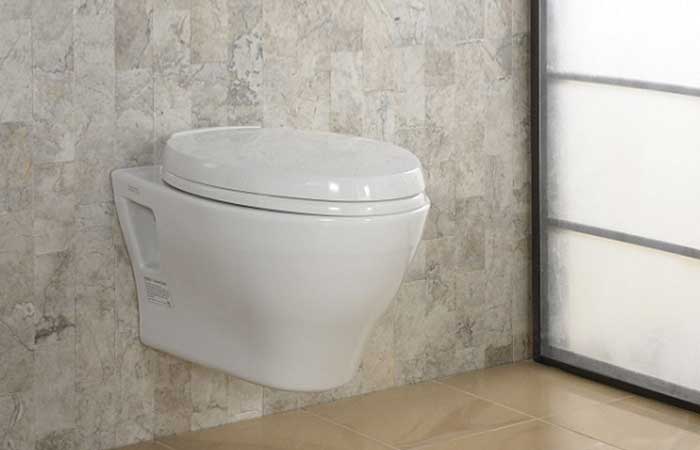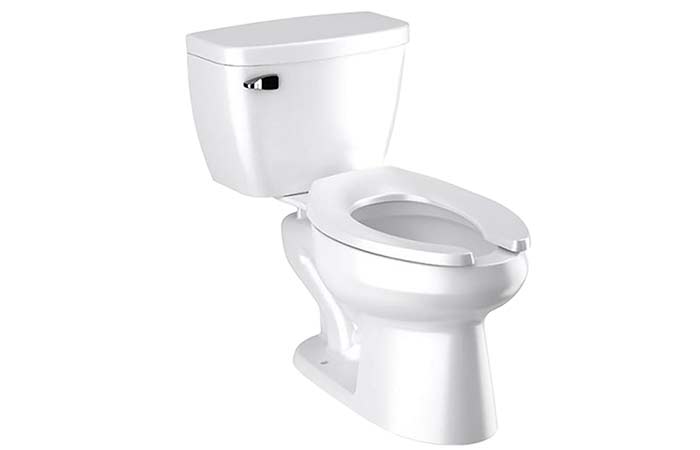What is a Tankless Toilet? How it Works + Installation Ideas
If you have been to many public places and some homes, chances are, you have seen a toilet that does not have a water storage tank. These toilets function almost the same way as the conventional tank toilets.
Following are details on what exactly tankless toilets are, features, how they work and what you need to have them installed in your home.
What is a Tankless Toilet?
Just as their name implies, these are toilets without tanks. This feature basically differentiates them from the traditional toilets. Ideally, a toilet typically has two main parts. These include the tank and the bowl. The tank is usually raised above the bowl. The moment you flush your toilet, gravity helps the flushing process.

The tankless toilet alters the traditional layout. Instead of storing water in the tank and using the power of gravity to flush it, these toilets basically hooks directly to your house’s pipes, using an electric pump that is located in the bowl to power the flush. Here, the valve is only set to allow only a predetermined amount of water to get into the bowl when you flush. This means that the toilet bowl will not overflow.
However, the drainage system works the same way as that of the traditional toilet. In buildings where water pressure is a problem, such as the private homes, tankless toilets can be of great help along with pumps or other technologies that power the flush.

Dimensions
Compared to standard toilets, tankless toilets are much smaller. Therefore, if you have a smaller bathroom at home, you can consider buying a tankless toilet. Any toilet that you choose to buy comes with two main toilet sizing issues. These are the height and length. Ideally, the length of your toilet seat should be 16 inches. Most of these models usually have round seats, although some can be square.
Elongated seats are usually 18 inches long and can, therefore, allow you to achieve a healthier posture. D-shaped toilets are generally 18 inches as well. If your bathroom is small in size, it is advisable that you choose a shorter seat. For the toilet height, there are two categories that you should consider:
Comfort height.
These toilets are normally taller as they are 17 inches or more. Such tankless toilets are ideal for elderly users or anyone who usually have back problems.
Standard height.
Also known as a normal toilet or right height toilets, these are usually 15 to 16 inches tall. Remember that these are measurements from the floor to the rim before you add the toilet seat. Therefore, you should be keen to double-check before buying one out there in the market.
Sometimes, you might buy an 18-ich tankless toilet, thinking that it is elevated. However, you later realize that the seat was not included. This means that your seat will be too short and might need a seat rise. Therefore, you should confirm whether the stated dimensions are with or without the seat.
Also, you should measure your rough-in from the baseboard. For optimal results, you should buy a toilet that has desirable dimensions as they come in different measurements. This will assure you that you will get the value for your money.
How do Tankless Toilets Work?
Having looked at what is a tankless toilet and its dimensions, time is ripe for you to know how these tankless work. To start with, it’s worth noting that tankless toilets are simply toilets that do not have a two-gallon tank attached to them.
The good news is that these toilets can receive enough water force or an electric pump to move the contents from the bowl and out the siphon directly from the water supply. The design looks sleek and functions just as well as the old tank system. The only difference with it is that it makes the toilet less crowded by eliminating the bowl.
The new layout of the tankless toilet needs a different approach to make flushing possible. It needed to make use of the water in the pipes without necessarily storing it anywhere else. Unlike the old toilet, this tank normally has an electric pump to pump the flush instead of gravity and atmospheric pressure.
Other layouts usually make use of the pressure of water stored in the storage tanks supplying water to the building. As such, these pumpless flushing systems usually require pipes that are 1” to work more effectively.
A tankless toilet normally has a special valve that helps to control the amount of water that is allowed to enter the bowl. This means that the bowl of your toilet will not overflow. Once the flushing water reaches the bowl, waste will just drain the same way it does for a traditional toilet.
The main aim here is to make sure that water is delivered in one burst so as to create a violent flow. This ensures that waste moves out of the siphon system at the bottom of the bowl just like in the traditional toilets.
To have this toilet in your home, you need to install a plumbing infrastructure that supports it. Here, you need to look for 1/2” to 1” size pipe. The debate about whether to install a ½” pipe or one that is 1” is still ongoing.
However, it is worth noting that the dimensions of these pipes will be determined by the amount of water being delivered into the bowl to move the waste through the siphon system. Here, this water has to be of a particular volume within a specified period.
Installation of a Tankless Toilet
You might have noticed the sleek, simple design of a corporate or public tankless toilet and wondered if you can still have one in your home. The reality of issues is that you can install this toilet in your home but have to make some considerations. Some of these considerations include:
1. Ensure that you can generate high pressure.
These toilets usually require high pressure to operate. This is the reason why these toilets are usually found in large commercial and public buildings. Such premises can support large pipes that are needed for high water pressure. If you have such pipes in your home, you can readily install it in your home.
2. Check if your home’s plumbing meets the requirements.
For this toilet to perform optimally, you should check to ensure that your home meets the necessary plumbing needs. If this is not the case, you can consider retrofitting the toilet by upgrading the existing plumbing system. However, if you consider this option, you should brace yourself with parting with more money as the cost of installation might be high in the long run.
3. Ensure that you have sufficient power supply at your home.
Since this toilet relies on an electric pump to function, you should ensure that you have a reliable power source. If there is a power outage in your home, the toilet might flush the way you would desire. If you have a backup generator, you can be sure that you will be able to use the bathroom in case there is a power outage within your locality.
4. Consider hiring an expert.
If you are installing a conventional toilet, you can consider doing it on your own. However, if you choose to upgrade to a tankless toilet, you should consider looking for an expert. This is because this toilet is more complicated compared to the traditional toilets.
If the manufactures of your newly acquired tankless toilet don’t offer installation services, there are a couple of pro plumbers in your local area who can install it quickly and easily without a fault.
If you want to remodel your bathroom, you should consider upgrading it to a tankless toilet. Tankless models have become very practical for most homes out there. These toilets can save on space, conserve water and even bring a polished, modern touch to your bathroom.
Further Reading
- Tankless Toilets vs Tank Toilets
- Vault Toilet: What it is, How it works, Pros and Cons
- Pressure Assist Toilet: What it is, Problems, Pros, Best Brands Reviews
- What is an elongated Toilet? Dimensions & who it is best for
- Chair Height vs Comfort Height Toilet vs Standard
- Elongated vs Round Toilet Bowl Shapes